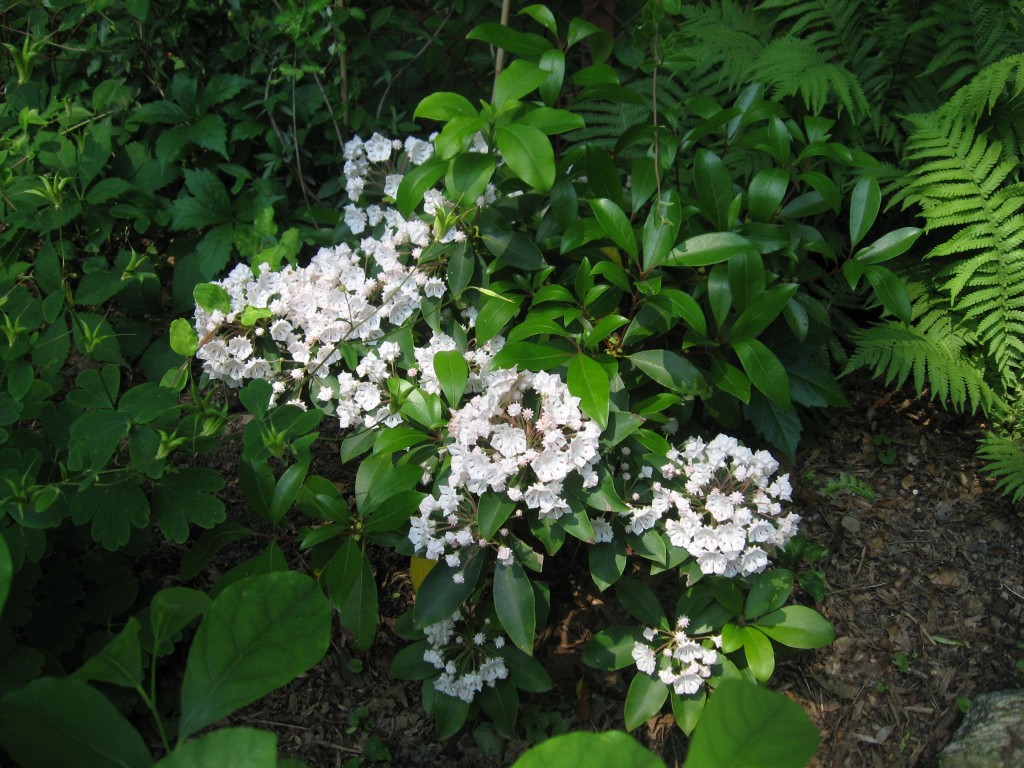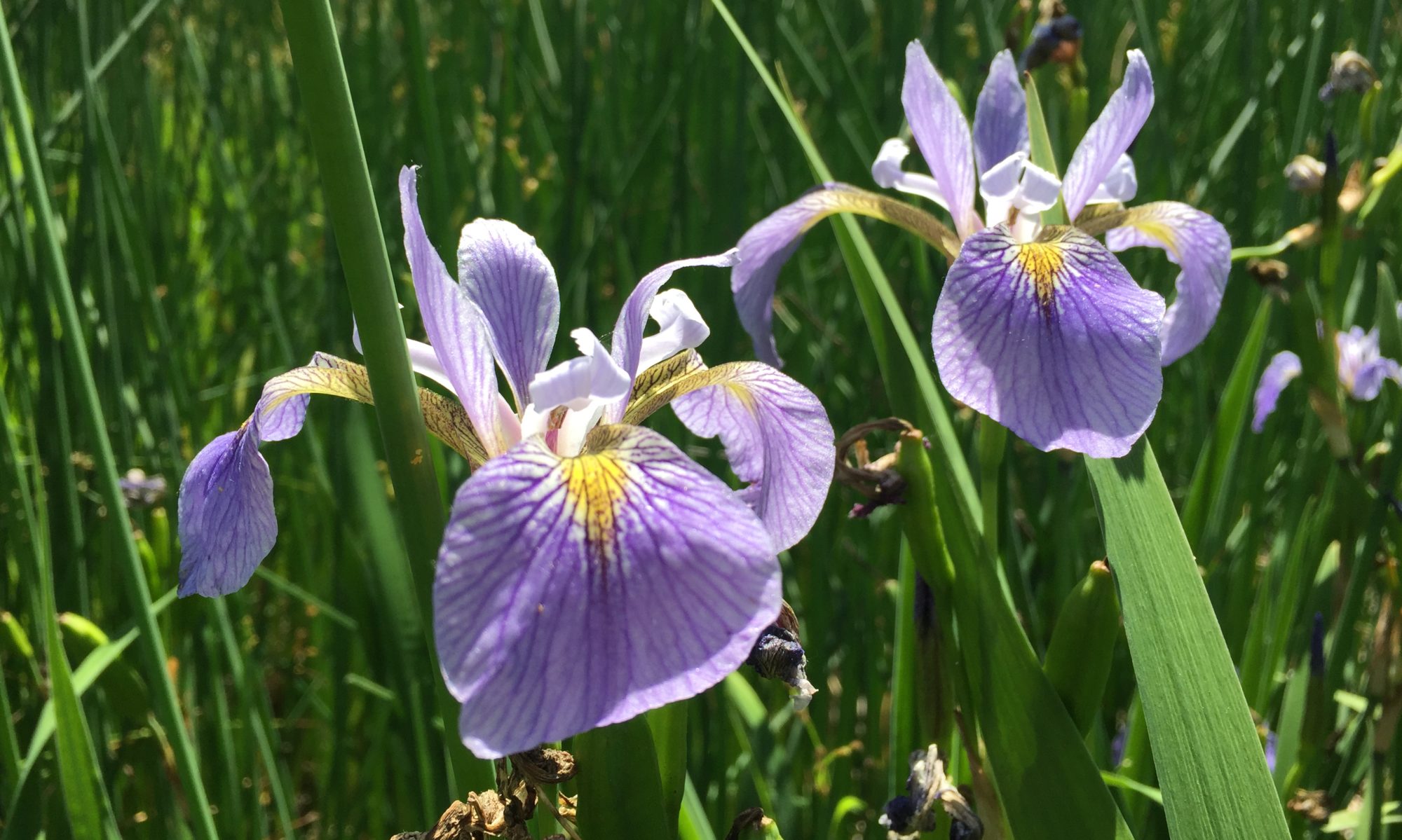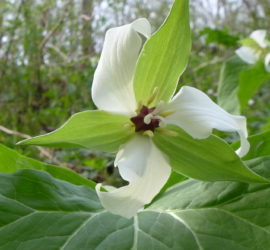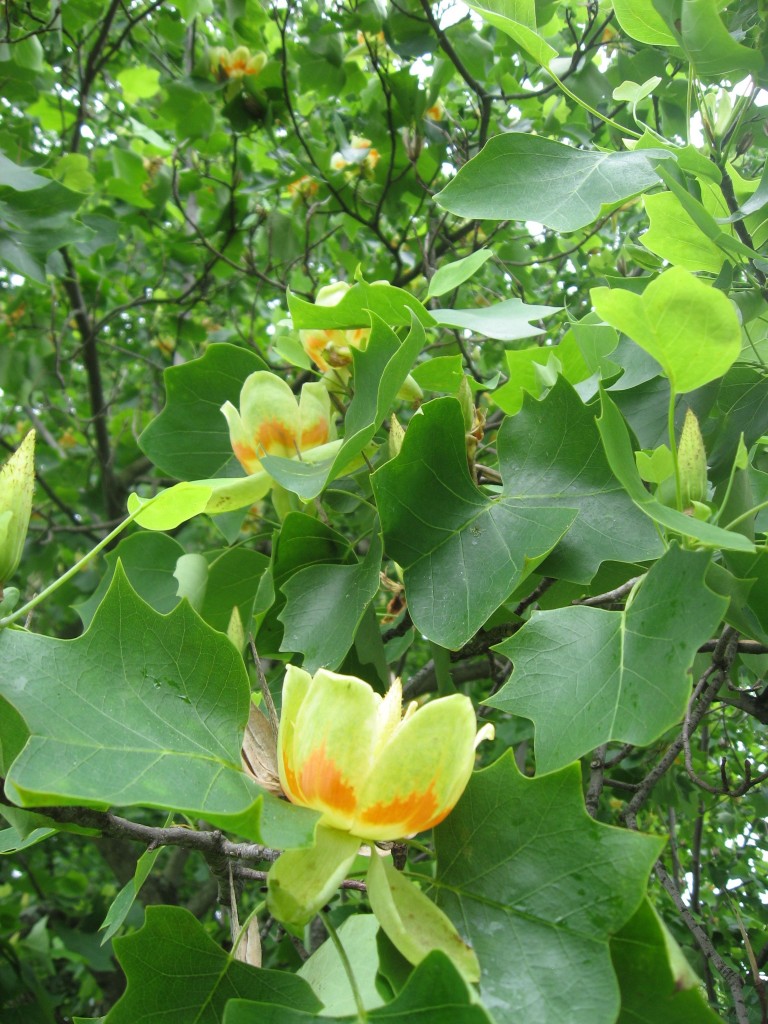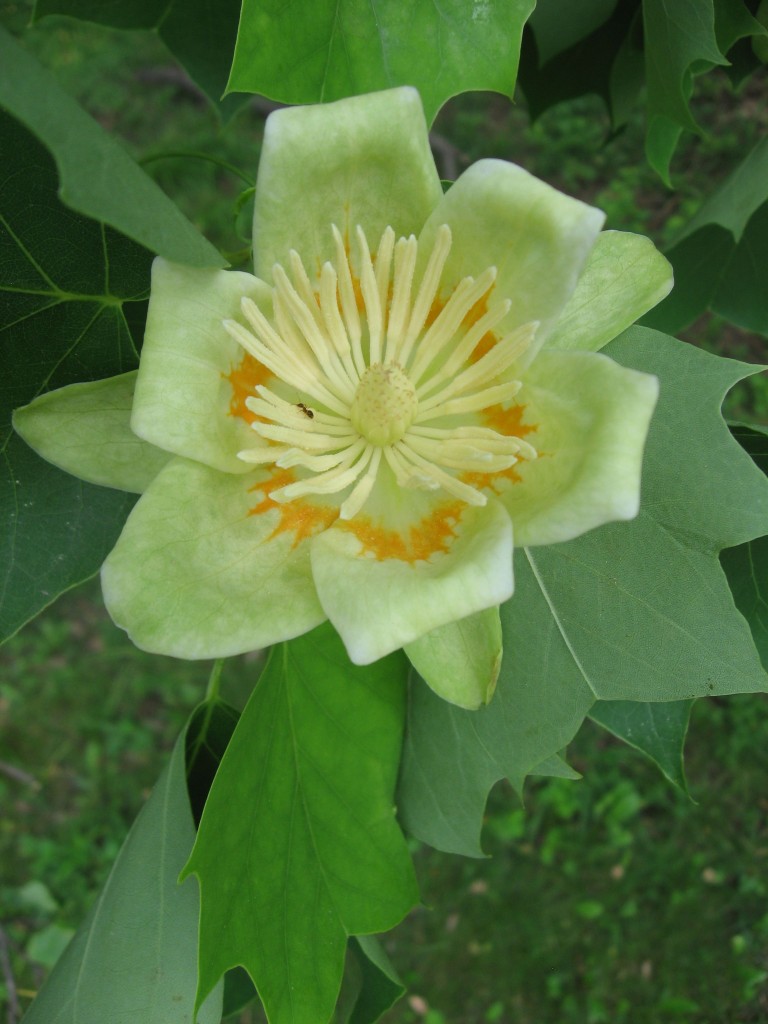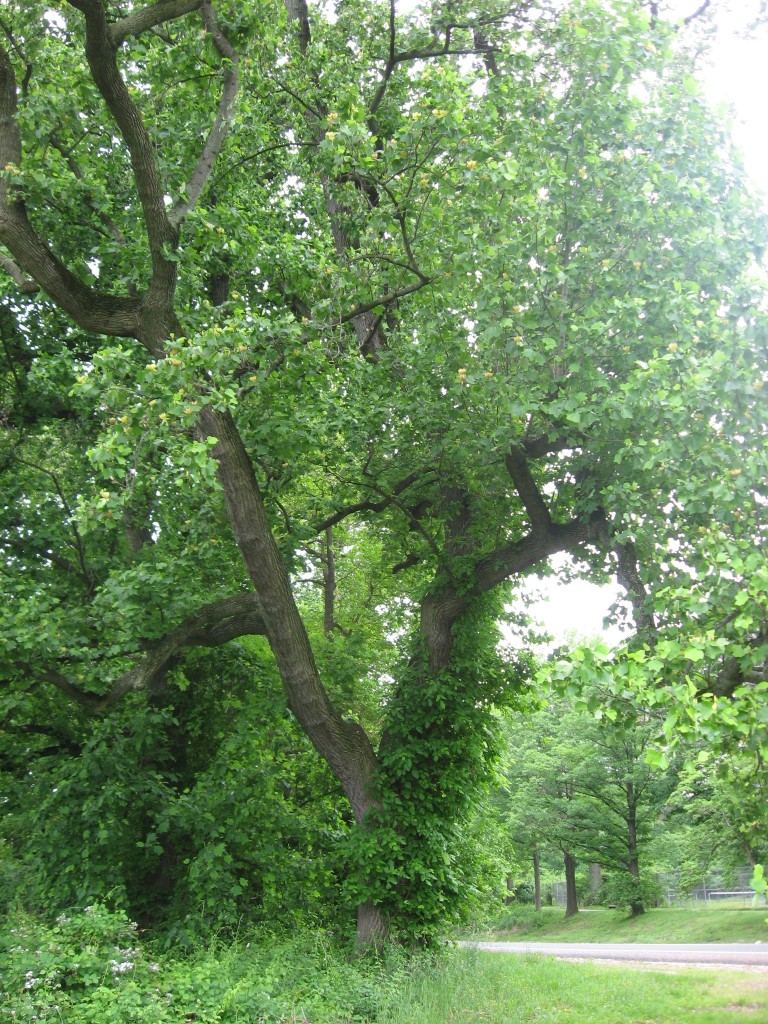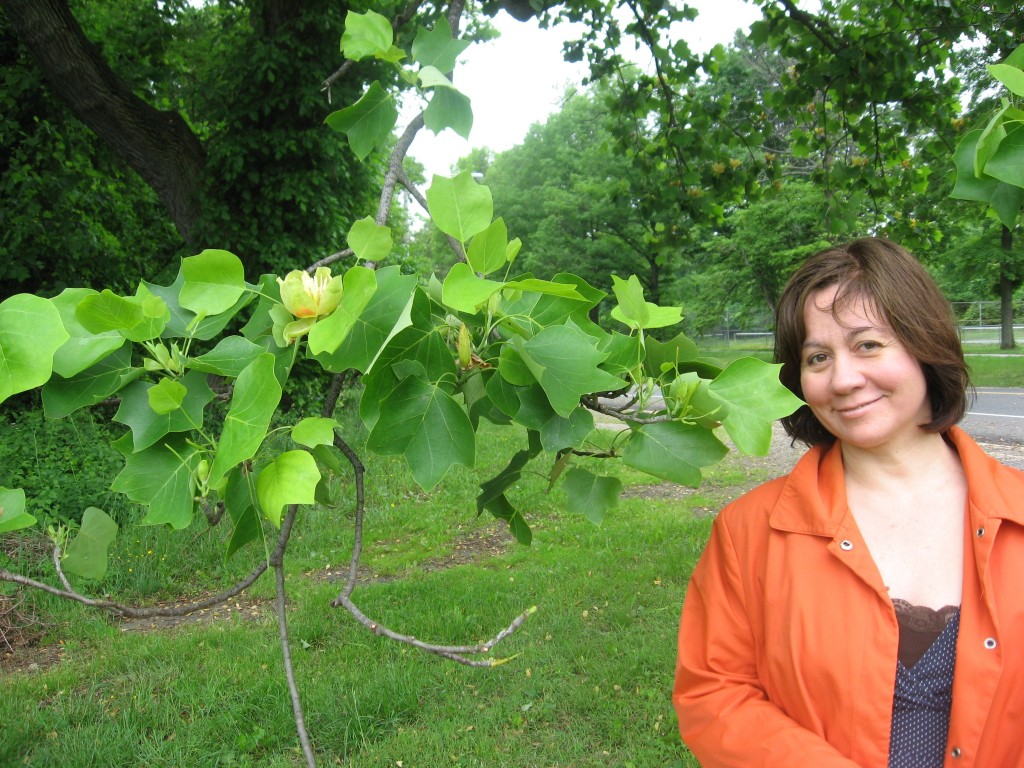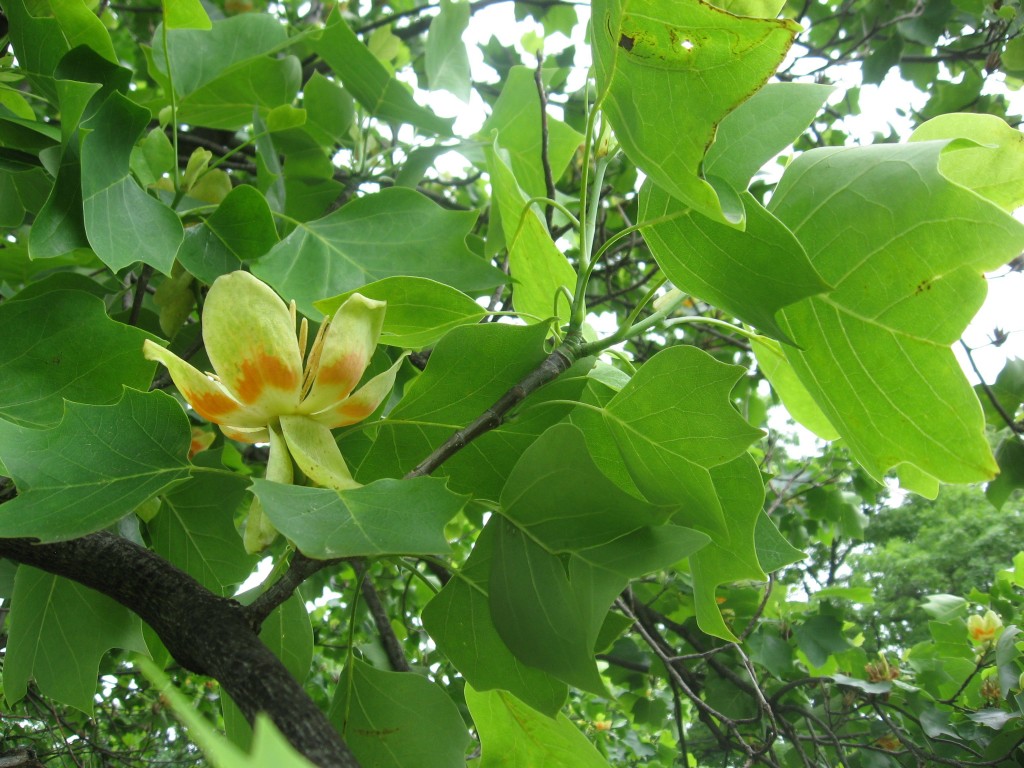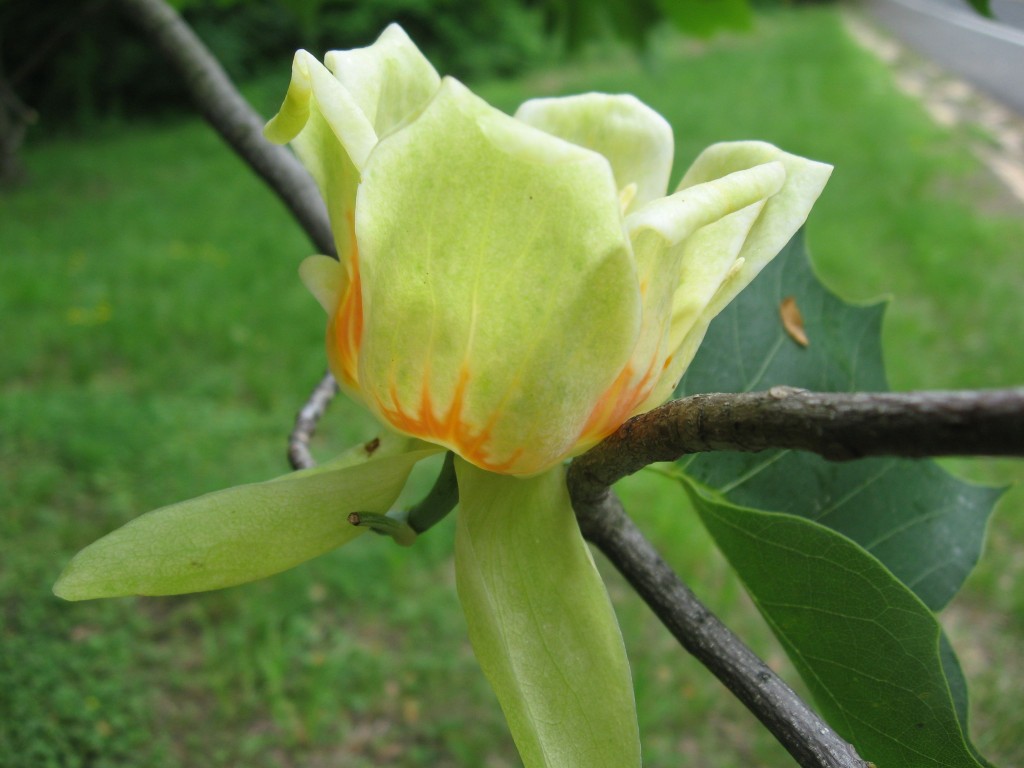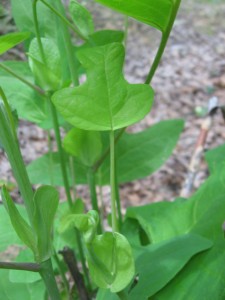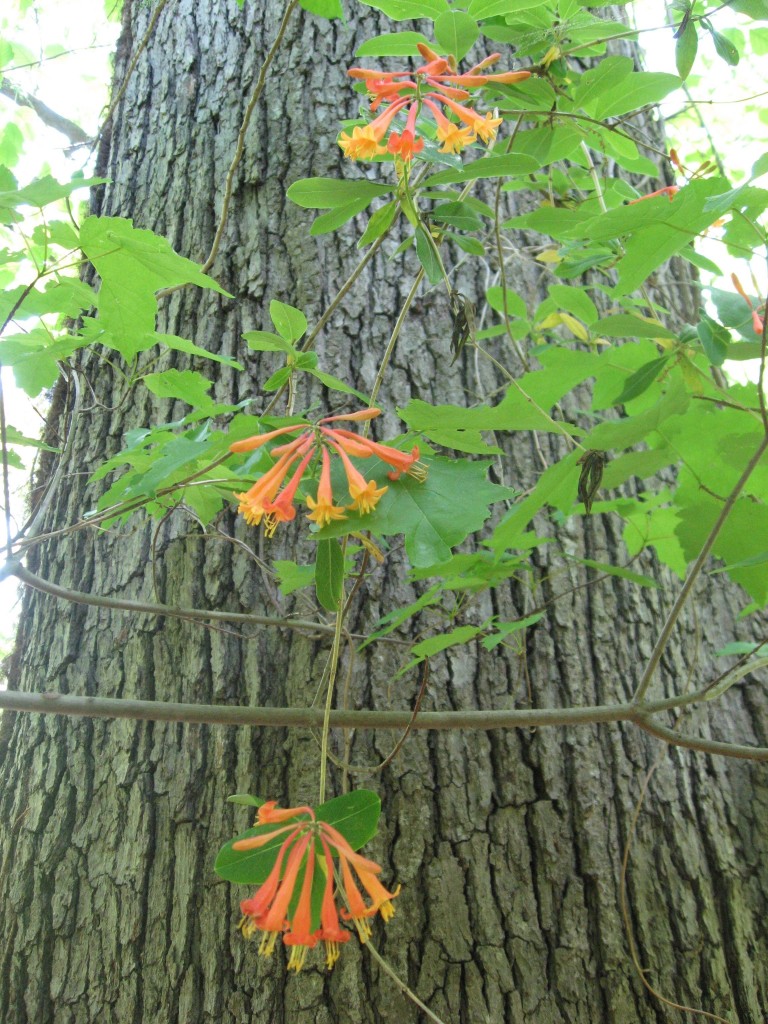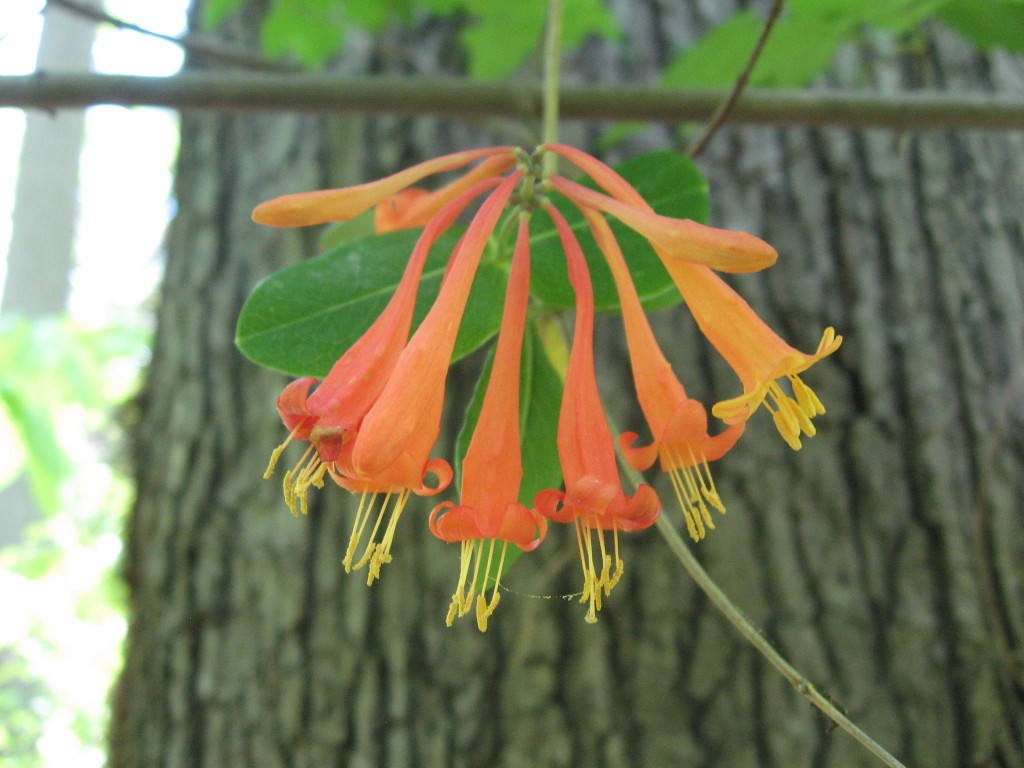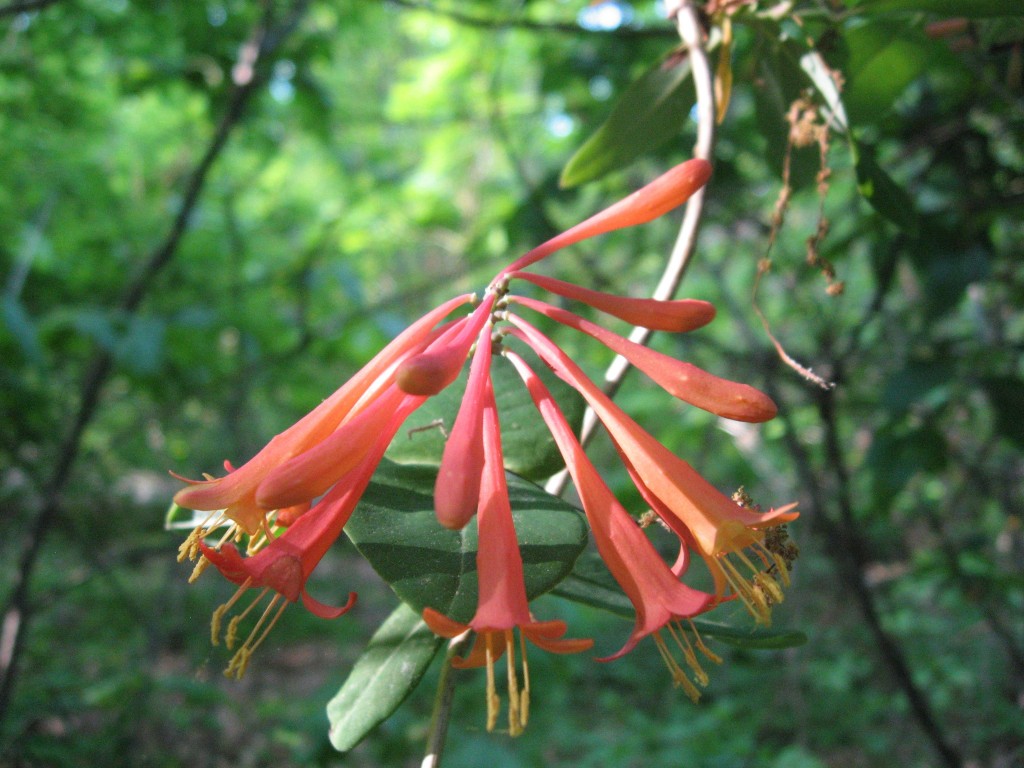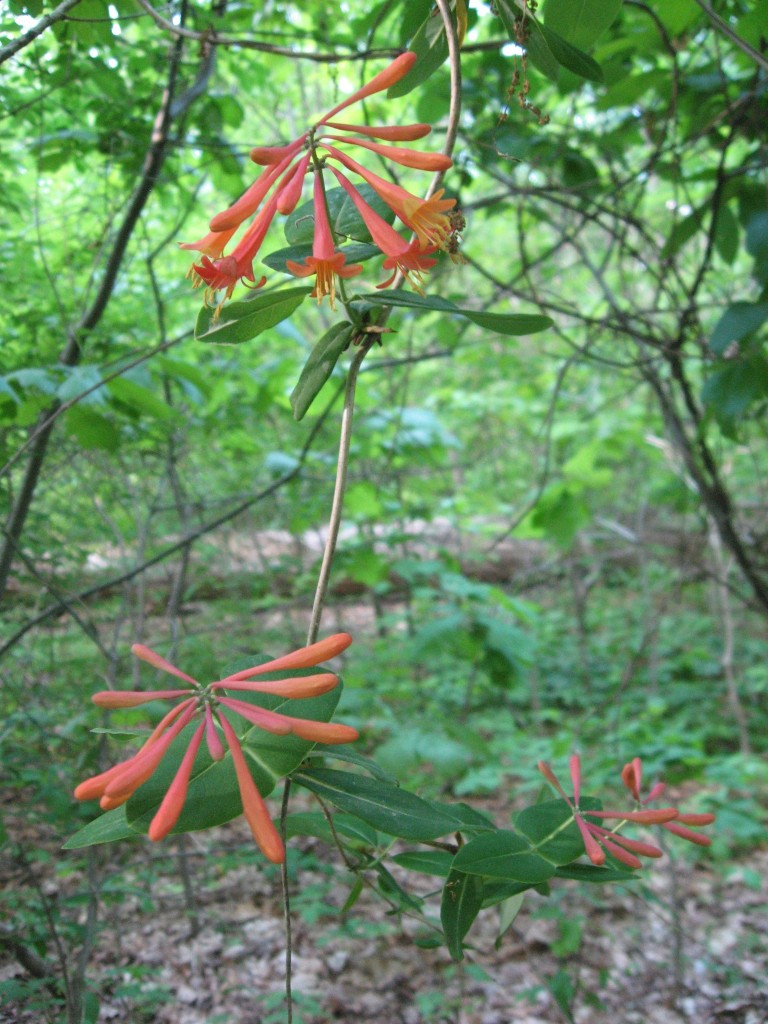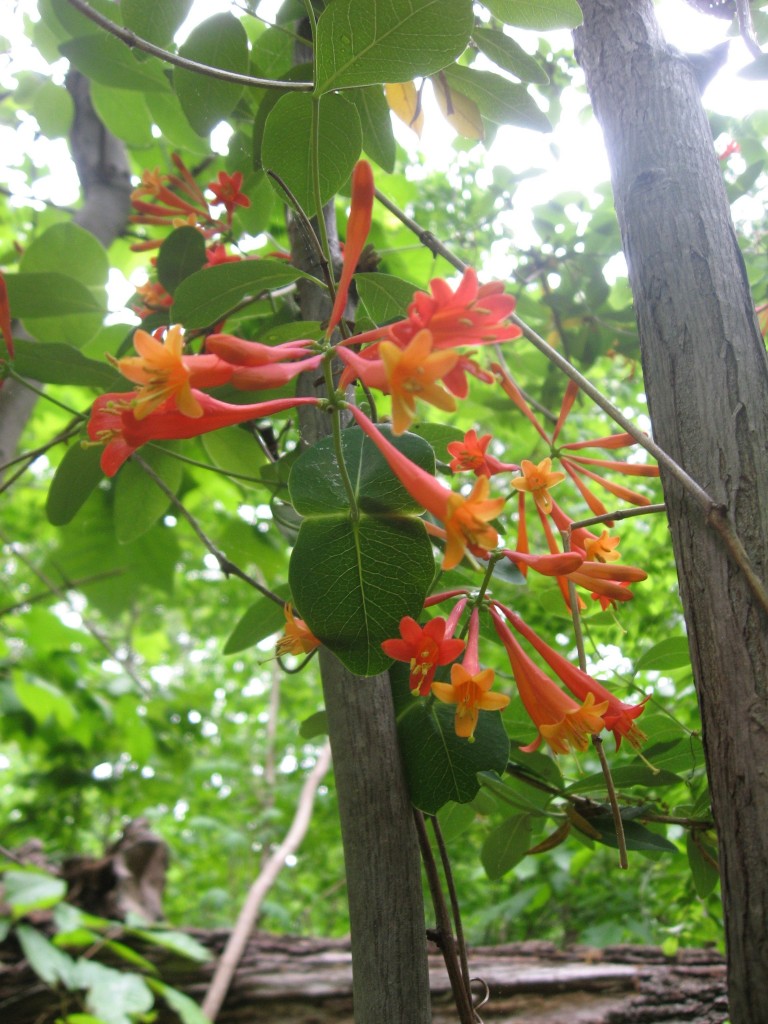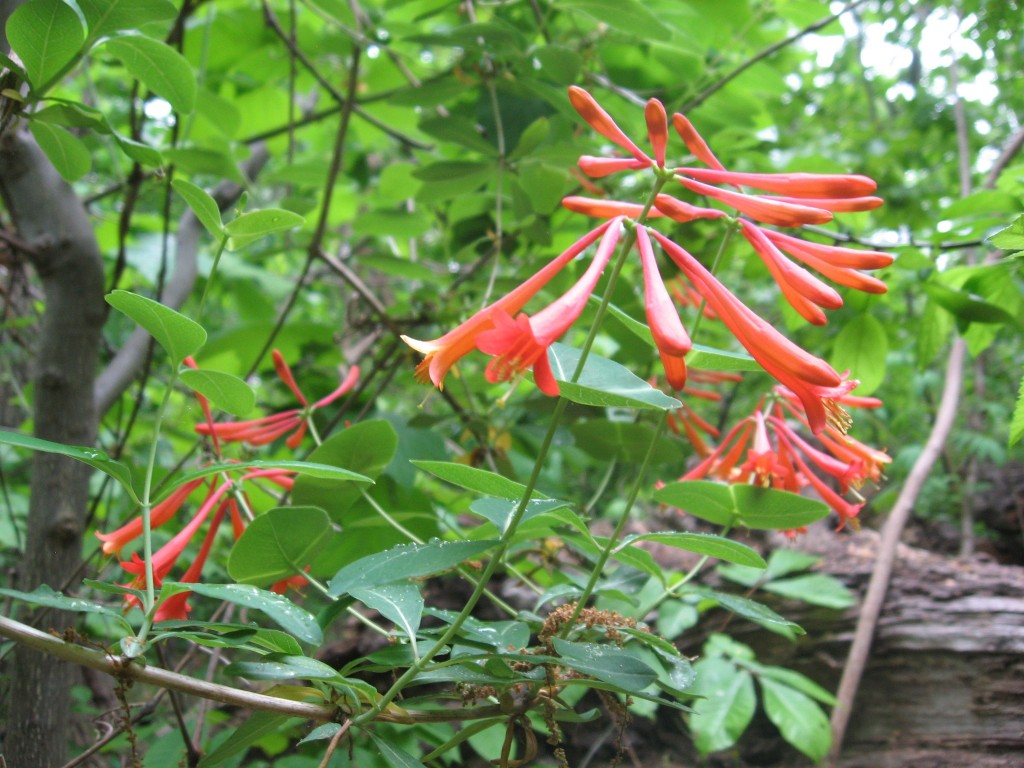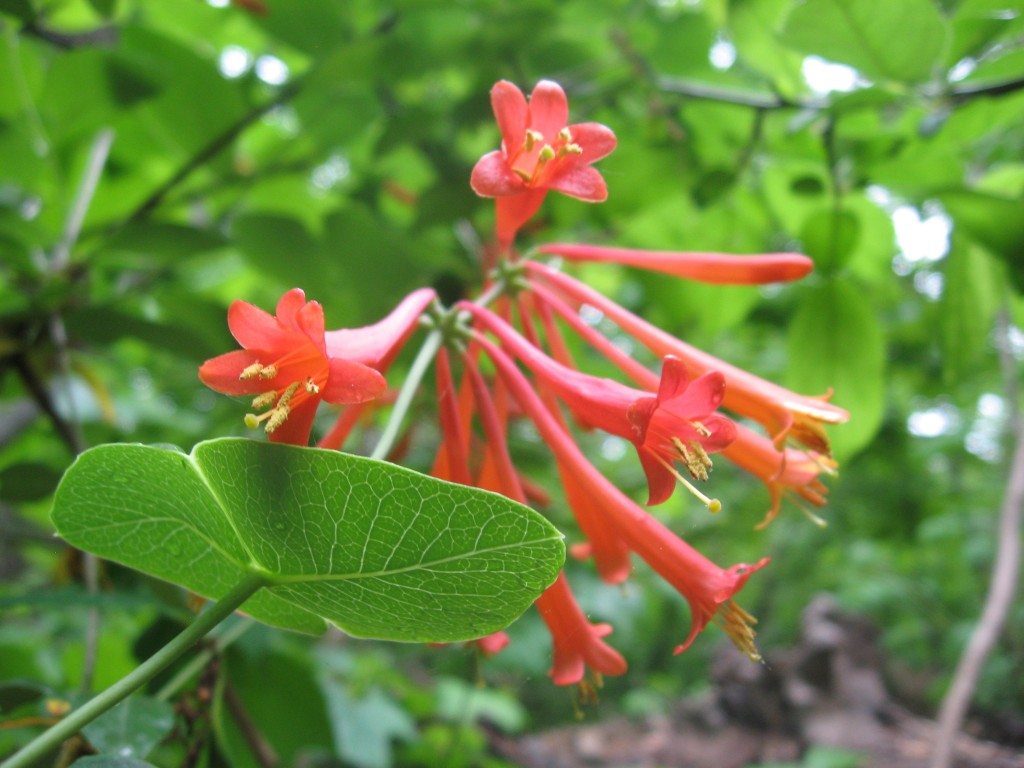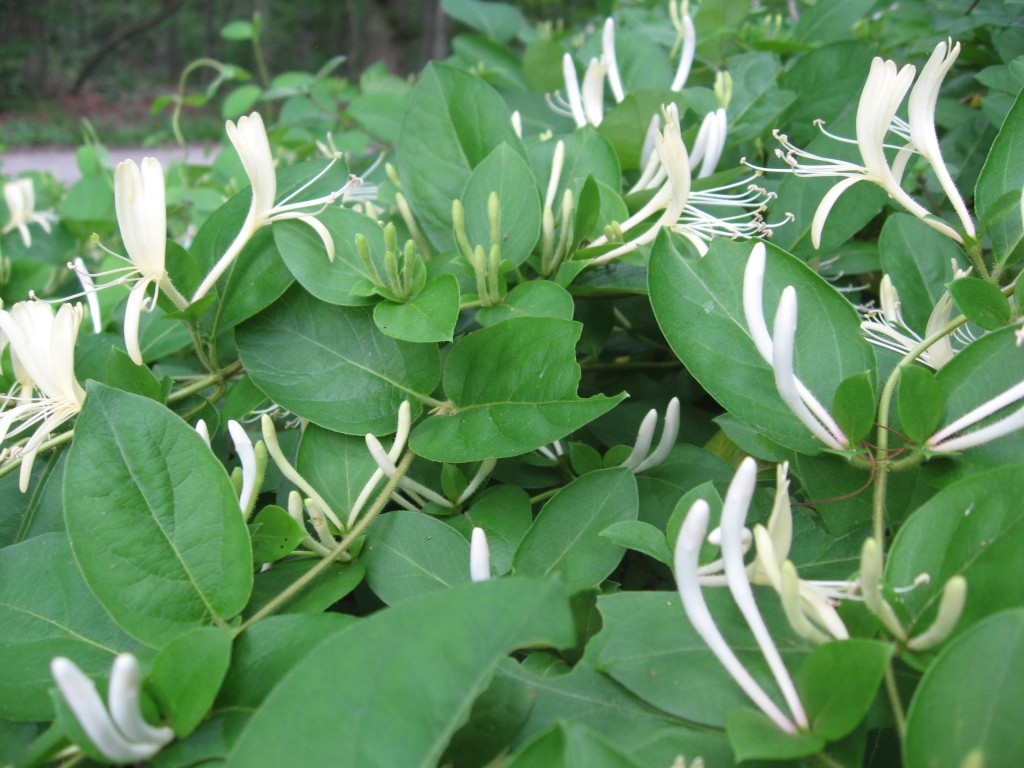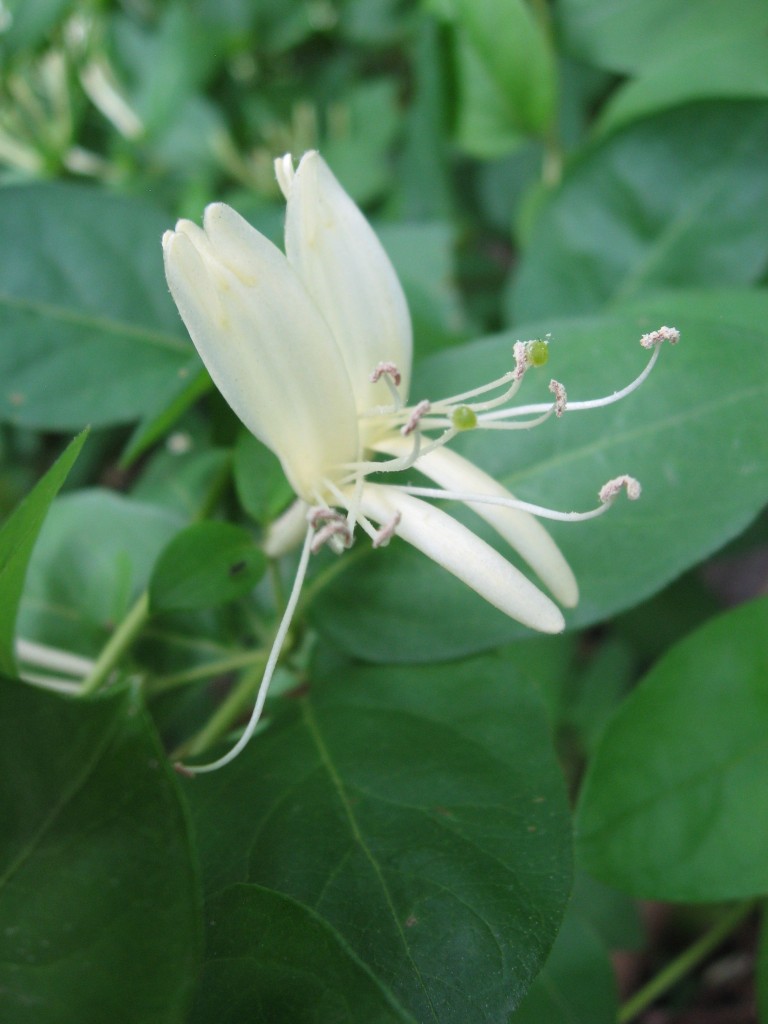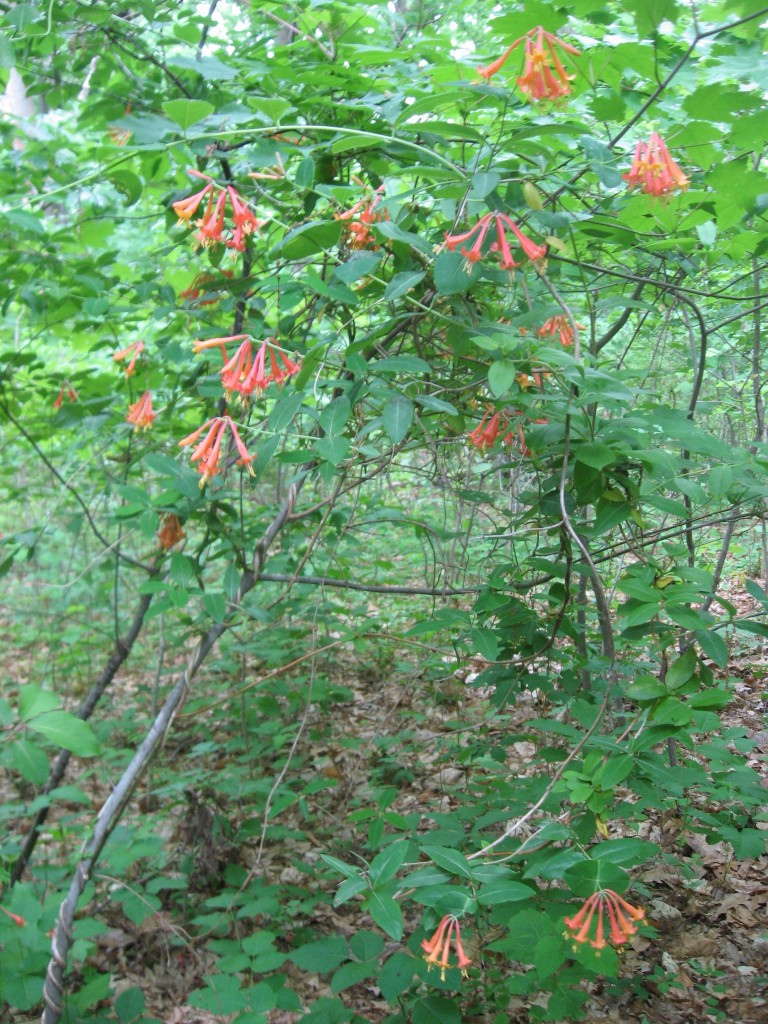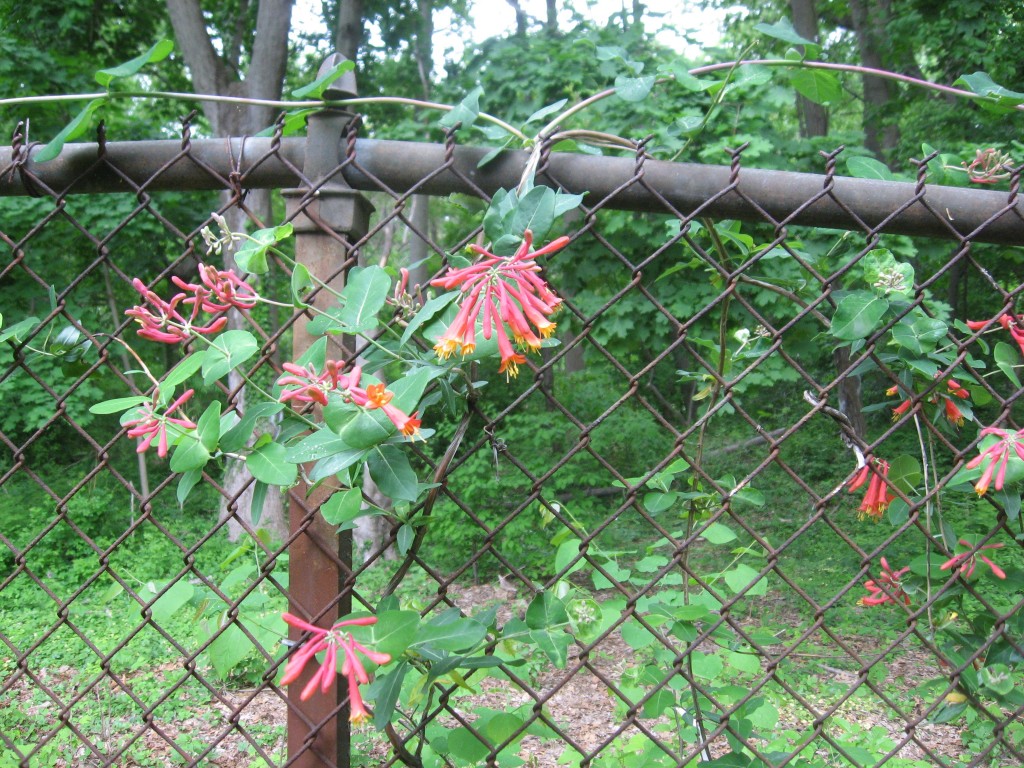A TALE OF THE TWO DELAWARES: AMIDST Â CITIES AND 8 LANE HIGHWAYS, OIL REFINERIES, MEGA-MALLS AND MINI-MALLS, AND SEEMINGLY ENDLESS LOW-DENSITY SPRAWL IS A NATURAL LANDSCAPE FULL OF NATIVE TREES, SHRUBS Â AND FLOWERING HERBACEOUS PLANTS, BIRDS AND BUTTERFLIES.
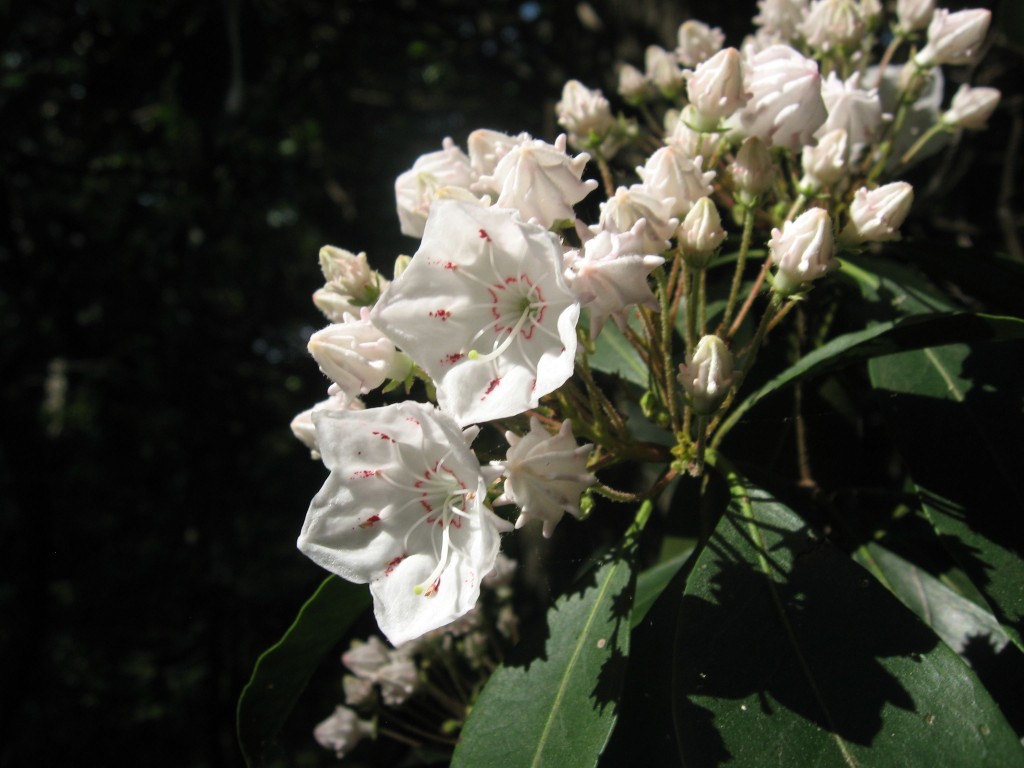
KALMIA LATIFOLIA
The contrast of natural landscape to urban sprawl is back-to back in New Castle County Delaware. At the intersection of Airport Road and Appleby Road is a mini-mall, a gas station, large swaths of parking, an apartment complex, lots of turn lanes and asphalt. Â This is the place that is driven through day in and day out. Â A place to merge on to the highway in order to get onto I-95. A place to buy gas. Â However, there is an amazing woodland that almost exists in a alternative reality, in almost exactly the same spot. Â This is the place where if you ever imagined what it must’ve looked like at this gas station 1000 years ago, at this exact spot, what was it like? Â Well, here at Appleby and Airport roads, All one has to do is cross the street, 150 feet and you are there, 1000, years ago.
Lewden Green Park is the pre-strip-mall Delaware. Â It is hard to believe that such a place can even exist in such close proximity to such a thoroughly disturbed urban area. Yet Lewden Green Park is so rich in diversity of trees, shrubs and understory herbaceous vegetation, it must be accepted as fact.
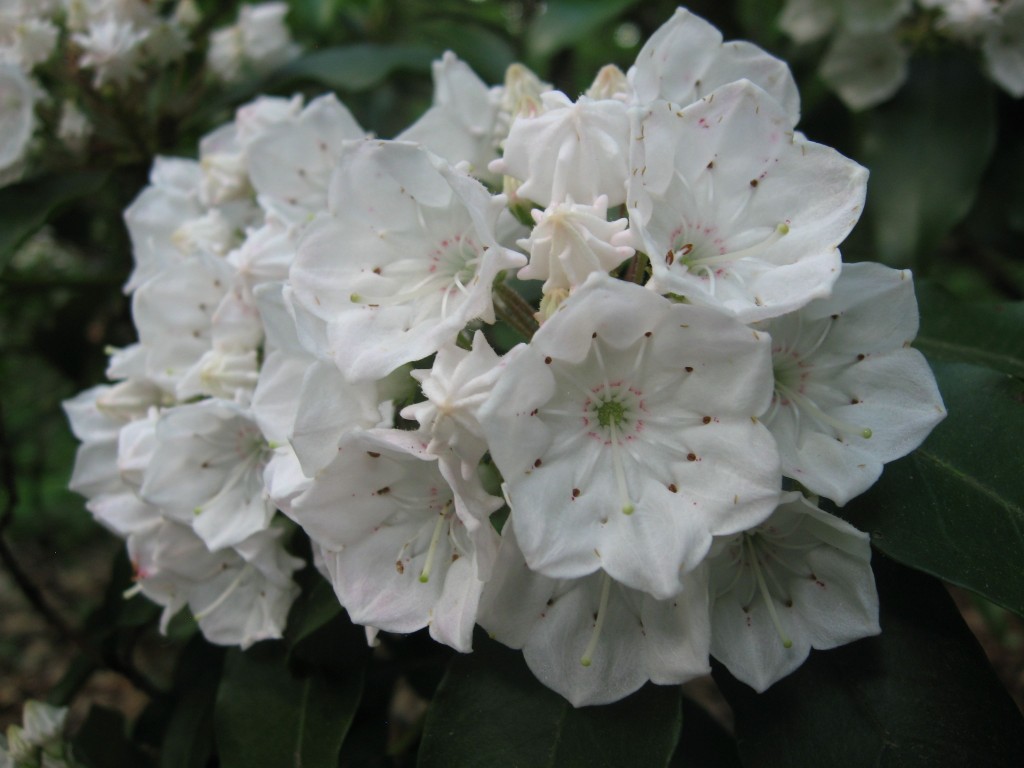
The above-pictured Kalmia latifolia is flowering in abundance in the Lewden Green park. Â There are mature shrubs in full flower all over the park. Â The woods is a joy to see: from the trails off into the forest is a shrub layer of blooming Mountain Laurel as well as maple leafed Viburnum. Oaks, Hickories, and Sweet-gum are in the canopy, and as we get closer to the Christiana River that flows through the park, there are Red Maples, Sycamores and Dogwood.
The Mayapples, Hay-scented ferns and False Solomons seals are on the forest floor.
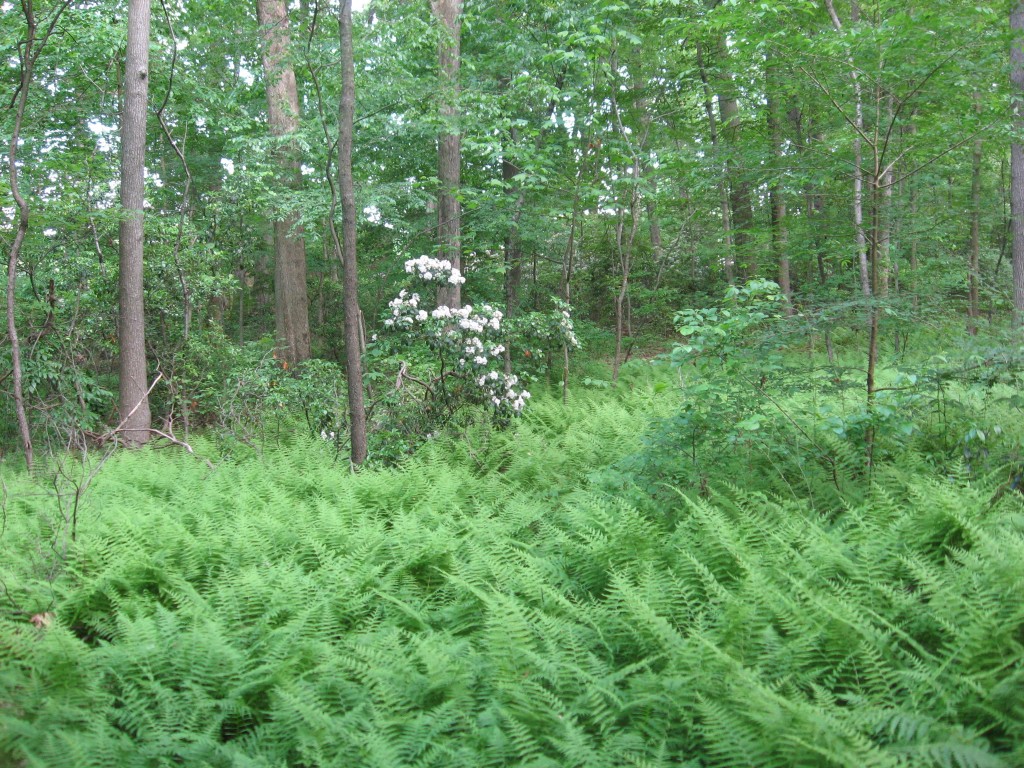
What did this spot look like 1000 years ago? Â It could be argued that the overabundance of white-tailed deer can explain the hay-scented fern patch pictured here, being that the deer don’t like the hay-scented fern. Evidence was noted of the deer, in that the Mayapples were in some areas reduced to leaf-less stems, a familiar scene in Morris Park, Philadelphia.
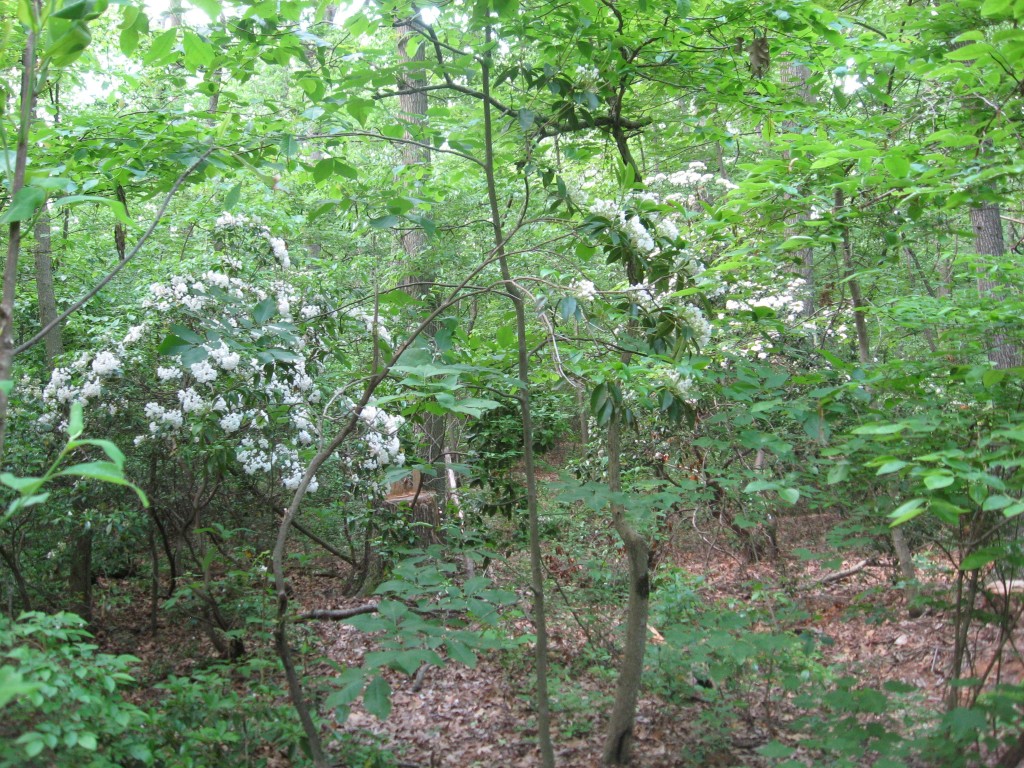
Just a glance into the forest reveals blooming shrubs under a canopy of mature native trees and a vigorous layer of  ferns and herbaceous plants, all native, which means they most likely have been living in this exact spot for thousands of years.  Imagine that a place in the forest can have stability for such a long time. The blooming Mountain Laurel pictured here is a descendant of  one that bloomed in this very spot 2000 years ago. The original Delaware, The natural lands that co-exist somehow with the developed areas are still holding on.  Imagine that the neighborhoods surrounding Lewden Green park could remain as stable as the park. Imagine living on a block of houses, where the inhabitants have been living there for 5000 years and thought little of it. The blooming Mountain laurel has been doing that for much longer and has no problems with that , just see the next picture:
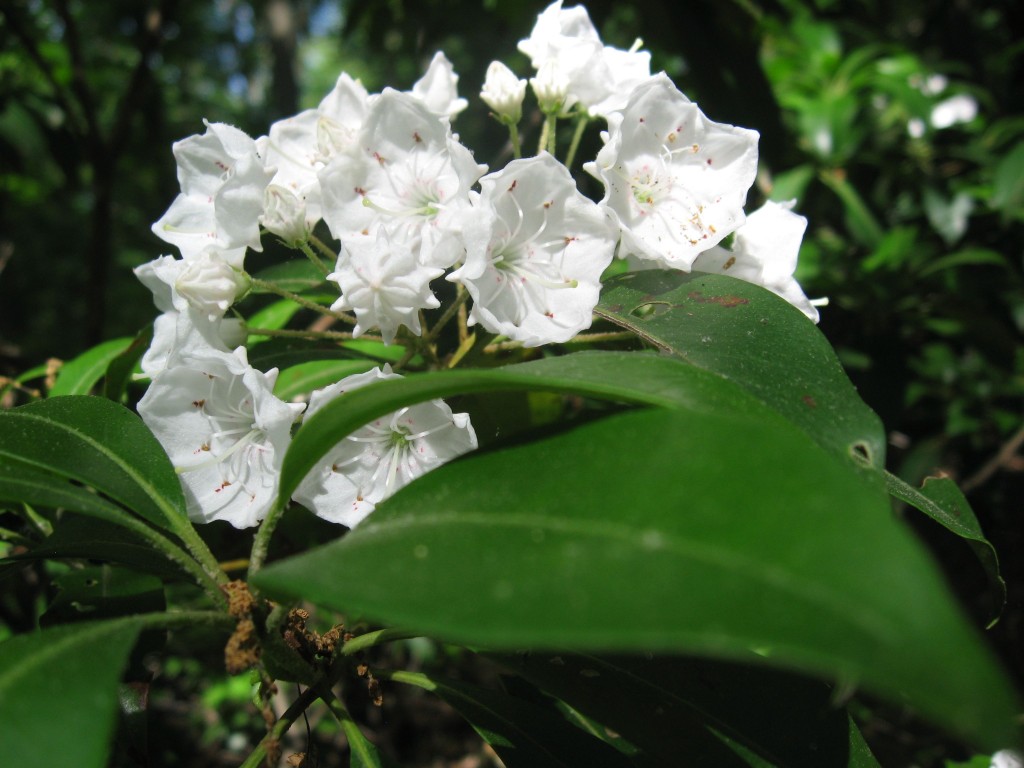
This absolutely magnificent flowering shrub has the answer.  How many millions of years of evolution created this beauty?  So, in this very spot, here in New Castle County Delaware, what was it like two hundred  years ago in 1811?  How about  300 years ago in 1711? 400 years ago in 1611?
Ok then: 2000 years ago in just plain old 11? Â Was this bush blooming just like it is here, right in this spot? In Delaware?
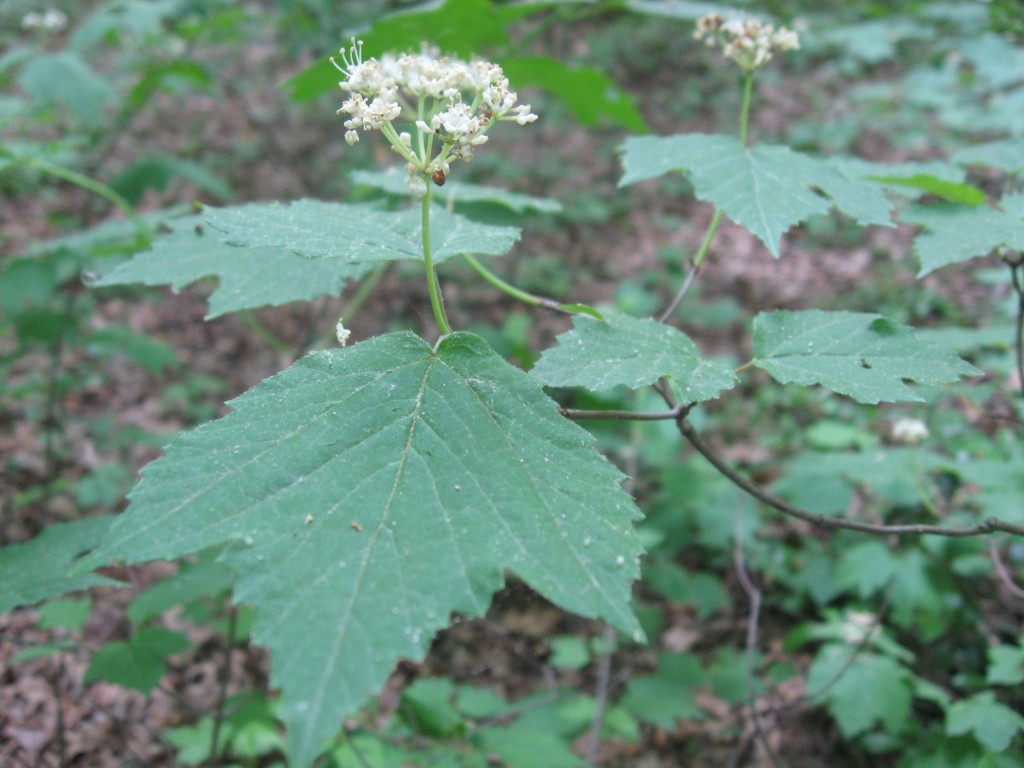
Maple-leaved Viburnum blooms!
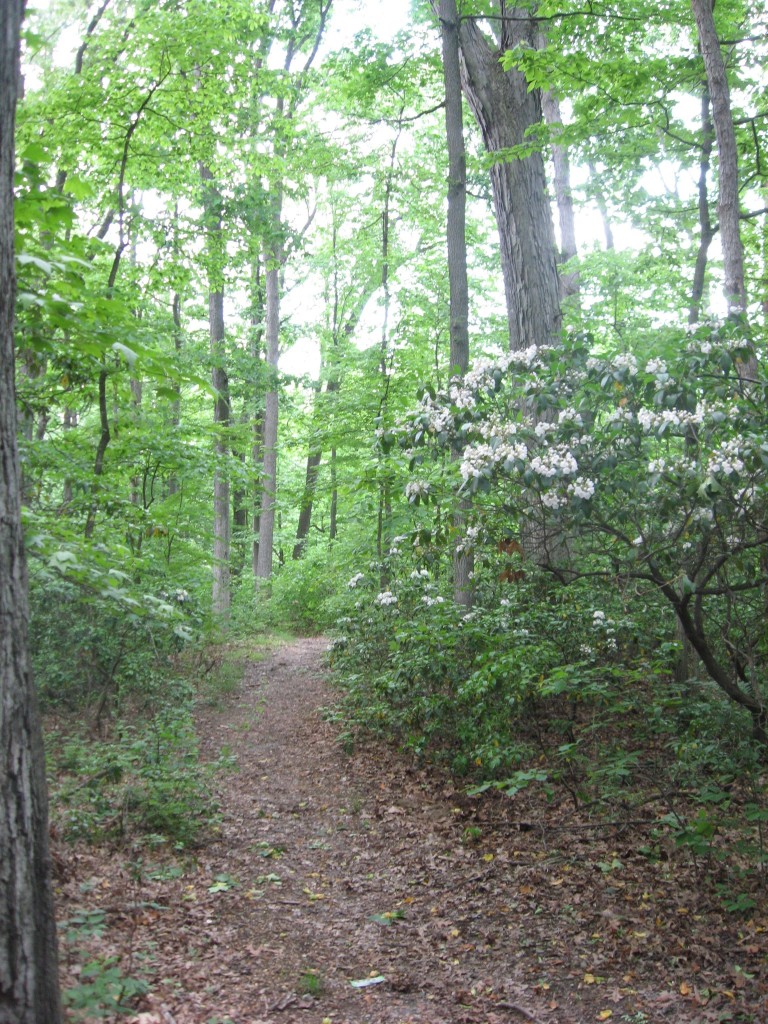
Whoever is helping maintain this park , you are doing a great job. This park is a treasure.
The invasive exotics Multiflora rose, and the Asiatic bittersweet, as well as the party spots with the beer cans  and garbage, (also, the axe  hackings of that poor mid-sized  oak tree next to the pond ) are  troublesome problems In Lewden Green Park.
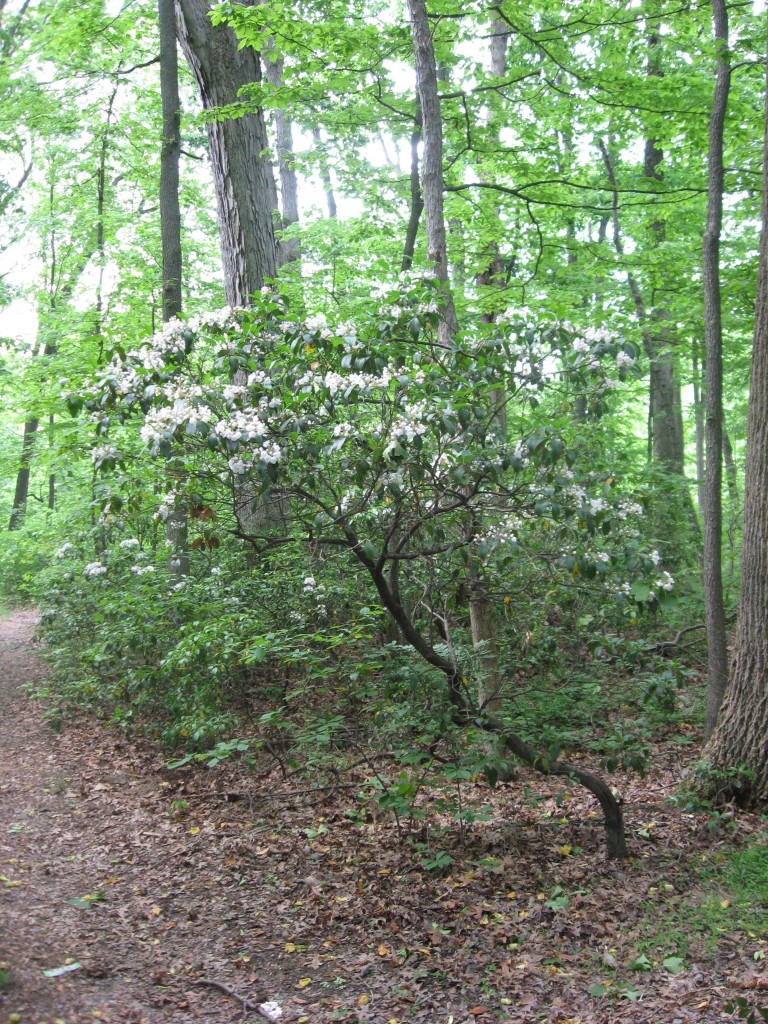
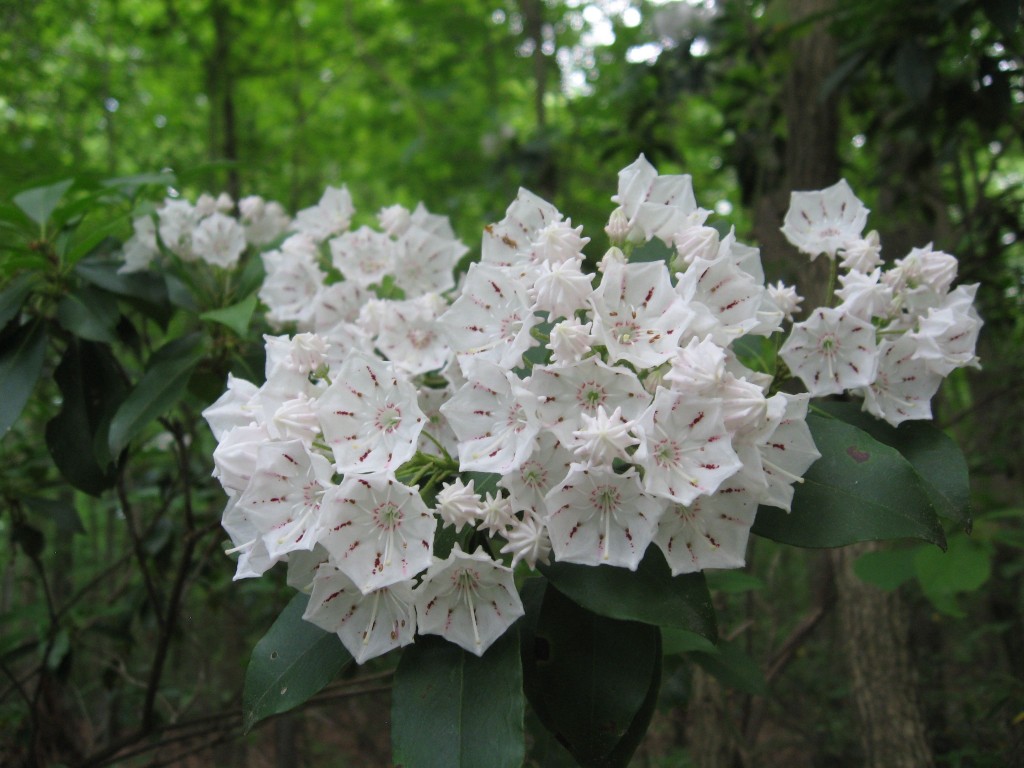
So do not be fooled by all of the miles of asphalt and industrial facilities in Delaware. There are Mayapples and Mountain Laurel blooming in the hidden forest remnants. In fact, Roger Tory Peterson writes in A Field Guide To Wildflowers: Â “The best remaining natural flower gardens I have seen along the East Coast are in Delaware.”
Delaware will enrich any itinerary of wildflower viewing in the Mid-Atlantic region. The birds like it here too.
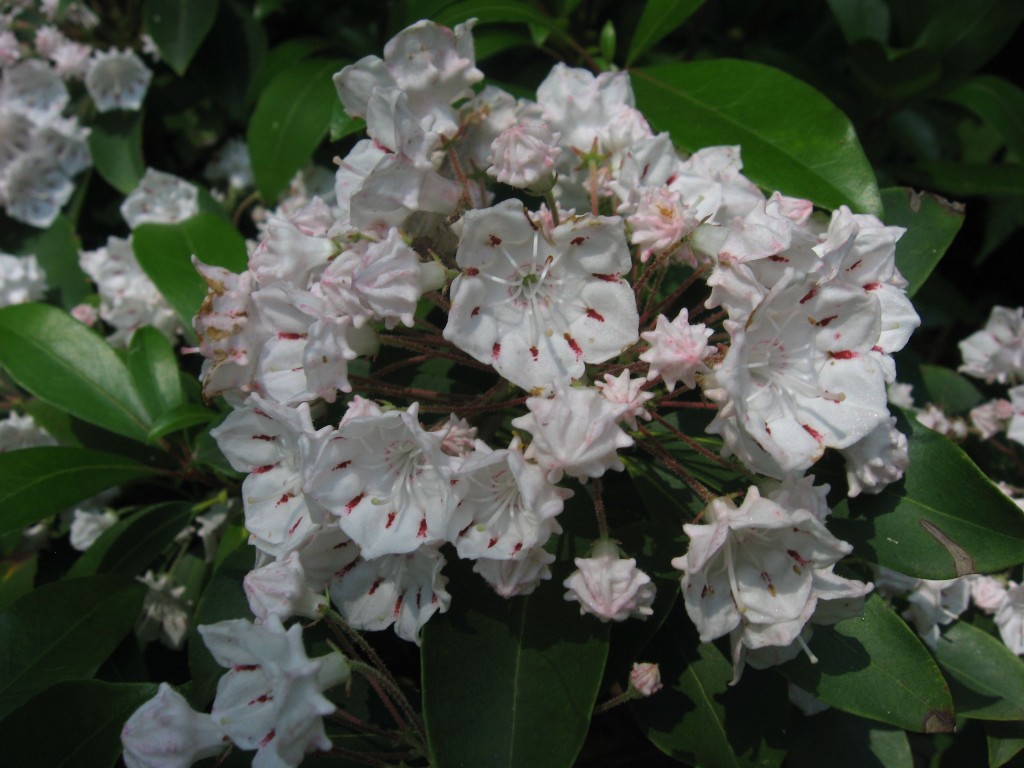
So these two pictures here are not in Lewden Green or even the Mt Cuba Center or Bowman’s Hill Preserve. Â They are in fact in our backyard. Thats right, this blooming beauty was purchased at a plant sale at Bowmans Hill Wildflower Preserve. Â These shrubs are great garden specimens. Â Rather than buy yet another Asian Azalea, perhaps your yard could be graced with this exquisite native shrub. Â If you want birds in your yard, the insects that will visit the Mountain laurel will attract the hungry birds and pretty soon you will have a natural ecosystem happening in your own yard. Â At your local native plant nursery, be sure to ask for Kalmia Latifolia. The latin name insures that you will get the right plant.
